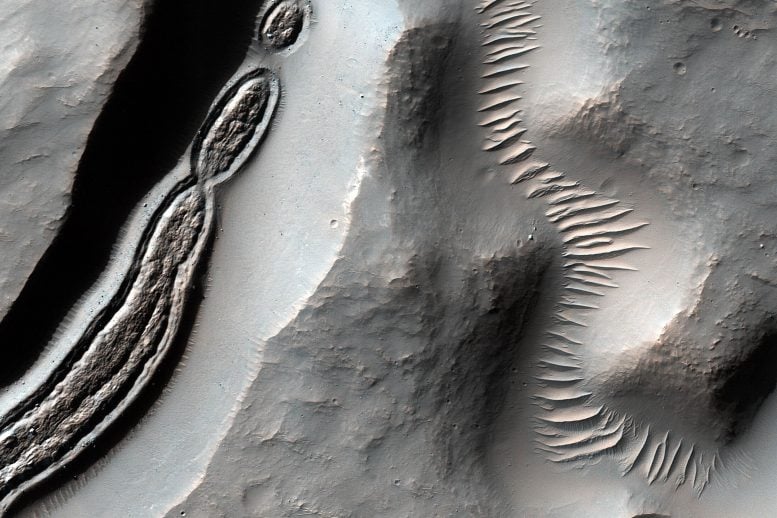
This is a close-up picture of a trough on Mars, with channels that drain into the depression. Credit: NASA/JPL-Caltech/University of Arizona
This image from NASA’s Mars Reconnaissance Orbiter is a close-up of a trough, along with channels draining into the depression. Some HiRISE images show strange-looking formations. Sometimes it helps to look at Context Camera images to understand the circumstances of a scene — like this cutout from CTX 033783_1509 — which here shows an impact crater with a central peak, and a collapse depression with concentric troughs just north of that peak.
On the floor of the trough is some grooved material that we typically see in middle-latitude regions where there has been glacial flow. These depressions with concentric troughs exist elsewhere on Mars, and their origins remain a matter of debate.
NB: The Context Camera is another instrument onboard MRO, and it has a larger viewing angle than HiRISE, but less resolution capability than our camera.
The map is projected here at a scale of 50 centimeters (19.7 inches) per pixel. [The original image scale is 51.3 centimeters (20.2 inches) per pixel (with 2 x 2 binning); objects on the order of 154 centimeters (60.6 inches) across are resolved.] North is up.
The University of Arizona, Tucson, operates HiRISE, which was built by Ball Aerospace & Technologies Corp., Boulder, Colorado. NASA’s Jet Propulsion Laboratory, a division of Caltech in Pasadena, California, manages the Mars Reconnaissance Orbiter Project for NASA’s Science Mission Directorate, Washington.

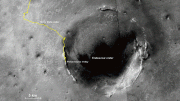
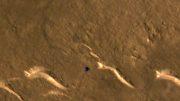
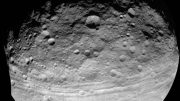

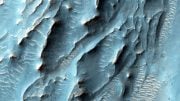
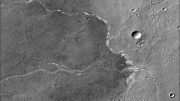
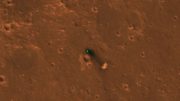
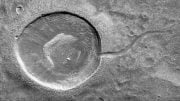
Be the first to comment on "Mars Reconnaissance Orbiter Views Strange Formations"